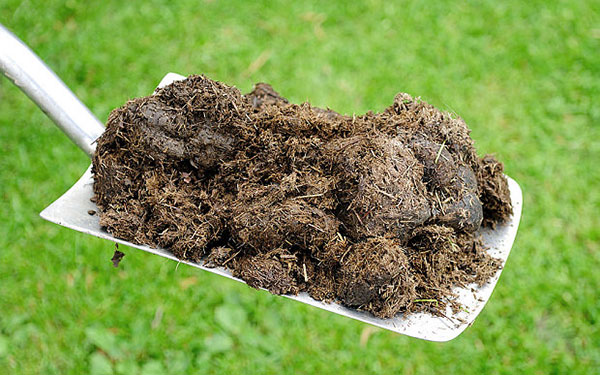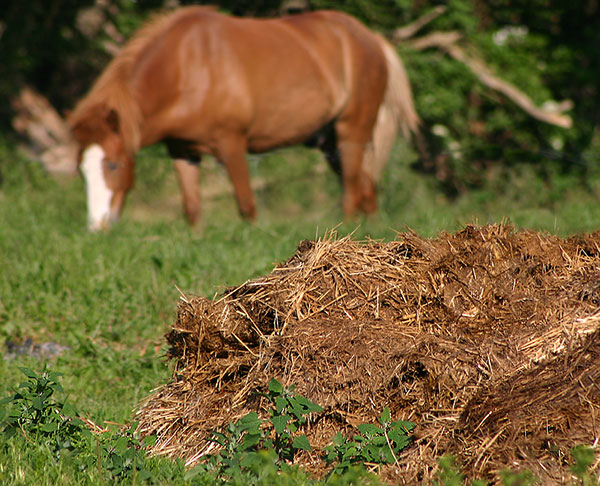Comprehensive utilization status and technology of livestock and poultry manure
With the rapid development of animal husbandry in China, the waste of livestock and poultry has also increased significantly. The waste produced by the livestock and poultry industry has exceeded industrial and urban sewage, and it has become a major source of pollution that cannot be ignored. Livestock and poultry manure will seriously pollute the water body, soil, and atmospheric environment if it is not effectively treated, and will bring health and health problems. Livestock and poultry manure is both a source of pollution and a source of fertilizer. At present, the utilization of livestock and poultry waste in China mainly includes three aspects: fertilizer, feed and energy.
Because livestock manure contains a large number of pathogens, it must be harmlessly treated before it is used for resources. For animal manure waste solutions, there are mainly biological fermentation methods and drying methods. The main key technologies for the harmless and resource-efficient treatment of livestock and poultry manure are biological fermentation, drying and deodorization of manure. At present, the main technologies used are: first, biogas fermentation; second, high-temperature drying; third, solid-liquid separation, composting and drying; fourth, mechanical stirring, high-temperature composting; fifth, inoculating bacteria, tower-type fermentation.

1. Compost fermentation method. Livestock and poultry manure is piled and fermented, and the eggs and pathogenic bacteria are killed by the temperature generated by themselves. This method is a more traditional and feasible method for the convenient use and treatment of animal manure. The disadvantages of this method are the large floor area and long fermentation time, which is not suitable for large and medium-sized farms.
2. Oxygenated fermentation. This method requires special equipment to ferment chicken manure and then granulate it, which can be used as a feed additive or fertilizer. Oxygenated fermented chicken manure should not be released for a long time, and it should be used in time.
3. Drying method.
(1) Solar greenhouse drying: This method requires solar greenhouse drying equipment. The mixer repeatedly walks, flips, smashes, and promotes feces in the greenhouse. The exhaust fan exhausts the moisture in the greenhouse until the moisture in the feces is reduced to The required content. The advantages of this method are energy saving and low operating costs; however, odors are emitted into the air during the process and cause pollution.
(2) Fast high-temperature drying: The high-efficiency combustion furnace is used to dry and process wet chicken manure with high water content into powdery or granular organic compound fertilizers or pellets.
(3) Microwave drying: chicken manure should be air-dried before microwave drying in order to greatly reduce the water content of chicken manure. The advantage of this method is that the drying and sterilization operations can be completed at one time. The disadvantages are that the drainage range of microwave drying is small, and the equipment cost and cost are high.
(4) Air drying: This method should be used in conjunction with solid-liquid separation equipment. Solid chicken manure with a moisture content of 60% -75% is put into an air dryer for drying. This method has low energy consumption, but it takes a long time to dry.
4. Biogas development. Biogas is used to make livestock and poultry manure in a closed environment to form an anaerobic state through microbial activities, so it is suitable for the survival and activities of methanogenic bacteria, and finally generates flammable gases. Manure is converted into biogas, and the energy conversion rate is as high as 87%. 80% -90% of the organic matter in the faeces after anaerobic fermentation is removed, which achieves self-recycling, ecologicalization, reduction and harmlessness. The biogas produced can be used for ordinary lighting, cooking, storage of grains, fresh fruits, and provides heat for greenhouses and greenhouses. After that, it produces compound fertilizer, edible fungi cultivation, earthworm breeding, and seedling raising.
5. Stone powder adsorption. The natural stone is processed into powder, and it is thoroughly mixed with livestock and poultry manure according to a certain ratio, so that the manure is in a solid state. This method has low cost, can quickly adsorb harmful gases and sewage, and reduce environmental pollution. This method can only perform pre-treatment on feces, and the feces still need to be further purified.
6. Odorless treatment. The EM biological agent made of anaerobic microorganisms is used to spray the environment of livestock and poultry in a certain proportion, or it is added to the feed for feeding. The method has obvious effects.

Analysis of livestock manure treatment technology
According to different breeding scales, the treatment of livestock and poultry manure can be divided into two types: dispersed treatment and centralized treatment. Decentralized breeding of livestock and poultry manure with farmers as the unit currently mainly uses two methods of direct return to the field and household biogas. Household biogas can not only solve energy problems, but also obtain efficient organic fertilizers, and reduce environmental pollution.
According to the principles of harmlessness, reduction and resource utilization, dry and wet treatment of livestock and poultry manure from large-scale farms should be adopted as far as possible. After the dry manure of each farm adopts anaerobic dry fermentation to obtain energy efficiency, the biogas residue is concentrated in the organic fertilizer plant and developed into granular organic fertilizer. The key of this technology is to modify the equipment of the existing scale farm to remove dry manure. And anaerobic dry fermentation technology and equipment. The flushing fluid and urine of each farm should adopt wet anaerobic fermentation. After obtaining primary energy efficiency, the thinner biogas slurry should be dispersed and comprehensively used. The key to this method is the establishment of a distributed utilization mode and operating mechanism. According to the scale of breeding, corresponding treatment methods are proposed, and the application characteristics and development trends of various technologies are analyzed.
Agricultural machinery for livestock manure treatment
During the treatment of livestock and poultry manure, the first need to develop dry manure cleaning machinery to realize the separation of manure and water and reduce the organic matter concentration in the post-treatment. In particular, large-scale farms should develop mechanical manure scraping boards, self-propelled or centralized manure removal machines for different breeding conditions to meet the needs of modern healthy breeding.
In the utilization of livestock manure biogas, the feeding and discharging equipment is a difficult problem. Especially when the biogas digester is overhauled, the submersible sewage pump is prone to failure due to the complex composition of the substrate in the pond, and its life is short. It is necessary to develop a special pump suitable for the biogas digester. In addition, biogas residue and biogas slurry storage and transportation equipment, such as biogas residue and biogas residue suction trucks, need to be further popularized, and the cost and reliability should be reduced to facilitate the promotion of biogasification of livestock and poultry manure.
An important way to utilize livestock manure resources is to produce organic fertilizer, which is the main source of economic benefits. A set of systematic fertilizer manufacturing equipment includes dehydration, transportation, dumping, drying, granulation and other links. At present, equipment in the feed and fertilizer industries are mostly used. Corresponding equipment should be developed according to the characteristics of livestock and poultry manure materials. The organic fertilizer process is combined to strengthen the integrated production capacity of the equipment.


